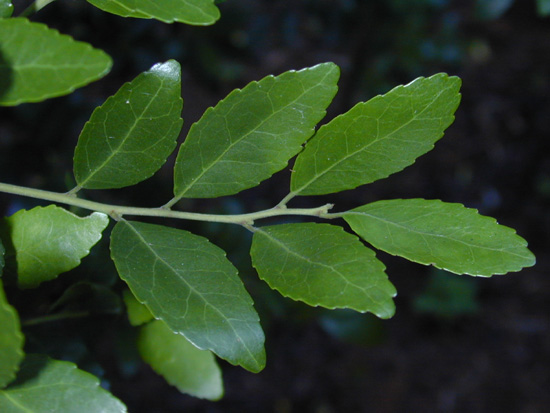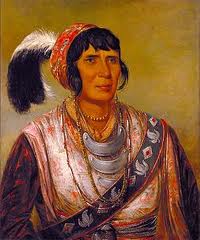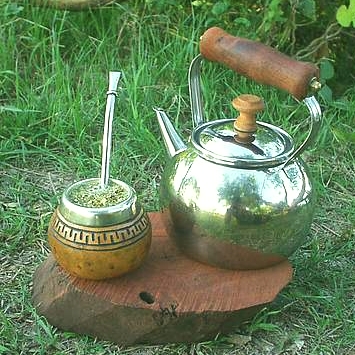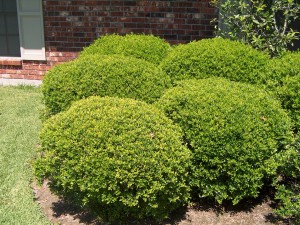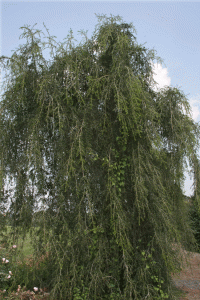History has many layers and shades. It’s not a straight timeline of great clarity but more like a meandering muddy river with much confluence, influence and effluents. During the European 100-year war composers wrote a lot of quartets because there weren’t enough musicians around to play the larger symphonies. Carburetors for primitive cars came from perfume sprayers and those developed out of the brewing industry. And Europeans didn’t go to the new world to move there, at least not in the beginning. They were looking for plants. Gold was low on the list until explorers got to Mexico.
Sassafras was the first export from the new world. Ground nuts, Apios americana, were second. Captain John Smith of Pocahontas fame (1607) was mainly interested in plants and wrote about them extensively. Some of the earliest writings on North American species and their use are from the notes of Smith, right, who is still referenced today. Plants are intertwined with history including Ilex vomitoria. Whether we know about Ilex vomitoria because of Billy Powell, or we know about Billy Powell because of Ilex vomitoria is a good debate. It’s difficult to have one without the other.
Billy Powell’s great-grand father was one James McQueen, a good Scotsman. His grandmother was Ann McQueen, grandfather Jose Coppinger. His mother was Polly Coppinger, probably christened Mary as Polly was a common nickname for Mary. His father was an English trader called William Powell. Now you know where the name Billy came from. And his uncle was Peter McQueen, a well-known fighter. While Billy’s genealogy is interesting, what’s more important is that he was born with a cast iron stomach. And in part because of that we know him as Osceloa, Seminole warrior.
It was a complicated time three hundred years ago as the 1700s gave way to the new century. The natives knew there was no way of stopping the Europeans. In 200 years the white men from the east went from a trickle to a tidal wave. The Creeks, Billy’s “Indian” heritage, chose a strategy of intermarriage to Europeans to form alliances. The Seminoles, with a higher percentage of runaway slaves and free blacks, forbade intermarriage with Europeans. The Creeks were also matriarchal so McQueen’s kids stayed in the Creek Clan with his wife.
The intermarriage approach didn’t work well (nor frankly did forbidding it.) When Billy was 10 General later-to-be-president Andrew Jackson defeated the Creek. Billy moved with his mother from their native Alabama to Florida to live with the Seminoles. “Seminole” is Creek for “wild people” or “run-aways.” They were essentially Lower Creeks who went south to avoid Upper Creeks. They also included run-away slaves. The Seminoles had a religious purging ritual that took an every day refreshing drink (“Yaupon tea”) and turned it into an emetic. Drinking a lot of it and holding it down longer than others moved one up in tribal leadership, along with other skills. We presume Billy held the black drink down well, that is to say, it took a lot to make him hurl and when he did it was a lot (thus he was very clean.) It was there in Florida, in an adopted tribe, where Billy Powell became Osceola and in time a leader of warriors.
“Osceola” is anglicized Creek for Asi-yahola which is usually translated into “Shouter of Black Drink” or “Black Drink Singer.” But Yahola was also the name of a Creek sky deity revered for his immaculate nature, read purity. Among some tribes only high-status males were allowed to drink the brew. For special ceremonies it was brewed extra strong. That’s where the vomitoria part of Ilex vomitoria came from. Ceremonies that included fasting and drinking large amounts of Yaupon “tea” and subsequent vomiting demonstrates how important spiritual purity and cleanliness were to the natives before assembling for important meetings or military action. It was not unlike some rituals of the Spartans.
While some of the many Seminole tribes signed a peace treaty, which meant abandoning their Florida land and relocation to west of the Mississippi, five did not including Osceola’s. He supported powerful Chief Micanopy’s opposition which culminated in some ambushes that led to the Second Seminole War. The names of people involved in that upheaval are still heard here in historical echos. Osceola County, Marion County, Payne’s Prairie, the town of Micanopy, Lake Jesup (now incorrectly spelled with two S’s) and Jacksonville.
Captured by deceit under a flag of truce by Gen. Thomas Jesup in October 1837 Osceola was taken to Fort Moultrie, South Carolina. It was there after much persuasion he posed for paintings. The by-gone cigar store “Indian” was fashioned after him. Ocseola died there of malaria on 30 January 1838, age 33, perhaps 34. He left behind two wives, one white, one black, and at least five children. Besides relocation the second reason Osceola went to war was he opposed enslaving free-born blacks. In the long run he lost the battle but won the war. And if there had not been a warrior like Osceola might there not have been a Second Seminole War and the continuing festering of racial issues in early America? Ilex vomitoria influenced history.
While hollies are covered in a different article on site — click here — there is so much interest in Ilex vomitoria (EYE-lecks vom-ah-TOR-ee-uh) as a beverage that it was time to craft a separate article about it.
The Yaupon Holly is North America’s version Yerba Mate, which is Ilex paraguariensis. Preparation of Yaupon (YAH-pon) ranges from putting four or five leaves in hot water — not boiling — for five or six minutes to elaborate drying, steaming, roasting and percolation. Some brew leaves and twigs. Not only does Yaupon have more caffeine than any other species in North America it also is high in antioxidants. A 2009 article in the Journal of Economic Botany recommended it become a commercial crop. Not surprising, a 1919 journal article recommended it as well. Spanish colonists in early Florida drank Yaupon tea. One priest in 1615 wrote: “There is no Spaniard or Indian who does not drink it every day in the morning or evening.” They called it “Indian Tea” or Cacina (the latter a name that confounded botanists for a few centuries.) In the 1700s English settlers in the Carolinas drank the “Indian tea” daily. It was very popular in the second half of the 1800s but fell out of favor. Scholars don’t know why but one would think the proliferation of coffee might of had something to do with it.
Left on its own the Yaupon Holly is a spindly understory tree, never growing much presence or height. The best examples of the species I know are cultivated ones in the landscaping of the Winter Park Library, in Winter Park, Florida. It’s easy to miss the native tree in the forest. However, two of its cultivars are very well known.
If nature makes a slight variation in a species it is called a variety. If man makes a variety it is called a cultivar. Two cultivars of the Ilex vomitoria are quite common. The most common is Ilex nana, or Ilex vomitoria var. nana. It is the ubiquitous hedge plant of the south. In fact there are some 17 different varieties of it. Thus finding a caffeine substitute is not difficult at all. The only question is how wholesome is the water and the environment where the hedge is located.
The second cultivar is more dramatic, the Weeping Holly, or Ilex vomitoria var. pendula. It makes a very attractive statement in landscaping growing into a mid-sized tree with red berries (not edible.) Sometimes it is also trimmed to look like an upside down bowl. Researchers report that under controlled agricultural conditions the pendula variation produced the most caffeine of all. The amount of caffeine in the “vomitorias” varies depending upon how much nitrogen they are fed. More nitrogen, more caffeine.
Many years ago in the Orlando Public Library I found a crumbling book written Dr. William A. Morrill. a plant PhD. He wrote in 1940 the best Yaupon “tea” was made by using an equal mix of chopped brown dry roasted leaves and chopped steamed green leaves. While Yaupon Holly tea does have a caffeine it is practically free of tannin, which reduces bitterness considerably.
The odd finding, according to the researchers however, was the presence of anti-oxidants in the leaves. This was influenced by sunlight. The more sunlight the plant received the more anti-oxidants, or perhaps said correctly, the less shade the more anti-oxidants. While the researchers said more testing was needed it would appear that an Ilex vomitoria var. pendula grown in full sun and fed a high-nitrogen fertilizer would produce the maximum amount of caffeine and anti-oxidants. They recommended it become a commercial crop.
Available cultivars include: `Folsom’s Weeping’, `Jewel’, a female plant with heavy fruit production; `Nana’, a dwarf, compact shrub form, male plant, no berries; `Pendula’ (`Grey’s Weeping’), large weeping specimen, sparsely foliated, to 35 feet tall; `Pride of Houston’, medium-sized shrub with heavy fruit production; and a low shrub called `Schelling’s Dwarf’ (`Stroke’s Dwarf’), more compact than `Nana’. Yellow-fruited cultivars include `Aureo’, yellow berries; `Otis Miley’, small leaves, yellow fruit; `Wiggins’ Yellow’, yellow fruit.
Two more tid-bits: Yaupon leaves are a good browse food for white-tail deer, and cattle. And some 4,000 people still speak Creek. It was the first “Indian” language to be standardized and written down. There was even a Creek newspaper.
Green Deane’s “Itemized” Plant Profile: Yaupon Holly
IDENTIFICATION: An erect, slow-growing, evergreen shrub or small tree forming dense thickets about 25 feet (8 m) tall in some areas. Usually much smaller. Many stems, low, dense, rounded crown. Thick leaves, simple, alternate, leathery, varying in size and shape from plant to plant. Flowers inconspicuous, male and female flowers on different trees, bark thin, gray, and smooth. Toxic red fruit is a small, shiny drupe.
TIME OF YEAR: Evergreen, leaves year round.
ENVIRONMENT: Grows best in climates with mild winters and long, hot, humid summers. It is found on coastal dunes, maritime forests, upland woodlands and pine flat woods. For the most part Yaupon inhabits well-drained sites but also occurs on stream banks, in wet woodlands, and floodplains. Found in southeastern coastal plains of the United States from Virgina to Florida and westward to South Central Texas. Drought and disease resistant, salt tolerant. Fast growing. Not native to south Florida.
METHOD OF PREPARATION: Ranges from seeping a few leaves a few minute in hot water to elaborate preparation of leaves and twigs, roasting, steaming, percolating.
Keying out Ilexes in Florida:
Leaves thin, membranous
Leaves evergreen, entire or rarely denticulate, fruit dull purplish
to black, plants of south Florida only ….. Ilex krugiana
Leaves deciduous
Leaves pubescent on most of the upper surface, margins serrate
Leaf blades elliptic with a rounded leaf base, 6-9 cm long
….. Ilex amelanchier
Leaves smooth on the upper surface, margins crenate to serrate
Leaf blades oblanceolate to ovate, 2-6 cm long, margins crenate
….. Ilex decidua
Leaf blades elliptic to ovate, margins serrate to crenate
Leaves with conspicuous veins, flowers and fruit appear singly or
in clusters up to 3, in the leaf axils
….. Ilex verticillata
Leaves without conspicuous veins, flowers and fruit appear
clustered from spur shoots ….. Ilex ambigua
Leaves coriaceous, evergreen
Fruit red to yellow
Leaf blade with sharp pointed teeth, these are usually regularly
spaced ….. Ilex opaca
Leaf blade entire, crenate or serrulate
Leaf blades with a rounded apex ….. Ilex vomitoria
Leaf blades with a sharp, pointed apex
Leaf blades 1-4 cm long and usually less than 1.5 cm wide,
margins entire, tip sharp pointed ….. Ilex myrtifolia
Leaf blades generally longer than 4 cm and wider than 2 cm,
may have a few teeth at the tip or with a single sharp
point ….. Ilex cassine
Fruit black
Leaves crenate, leaves often cupped, 3-5 cm long
….. Ilex glabra
Leaves with a few small teeth, leaves somewhat cupped, 4-7 cm long
….. Ilex coriacea

